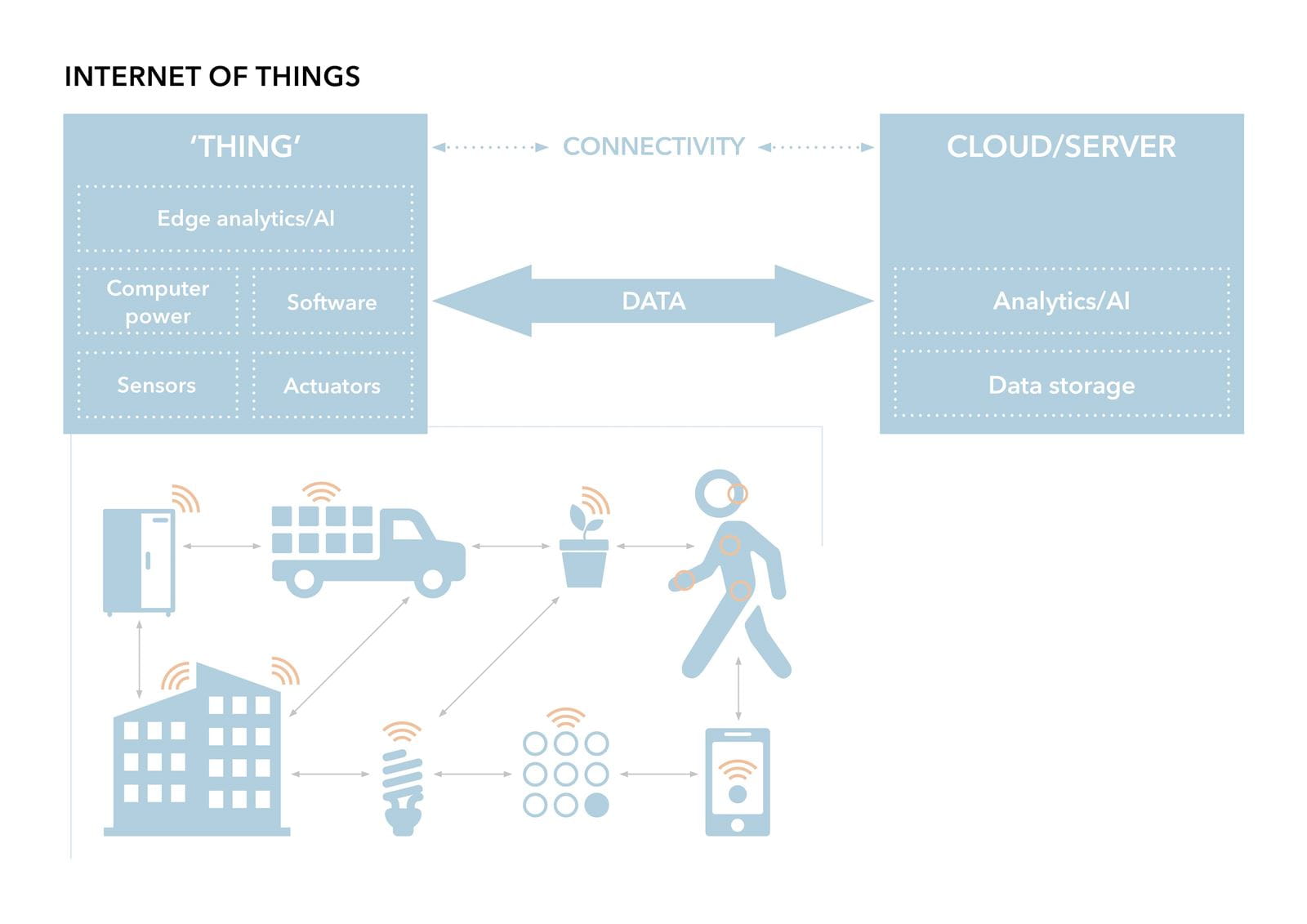How can accountants adapt to make the most of the internet of things?
The internet of things and accounting – a powerful combination
The internet of things (IoT) and accounting both help us manage a business from a distance. Using these tools we do not have to be physically present to sense the flow of products through a factory or understand their costs.
Combining the IoT with accounting has the potential to provide a powerful means of making organisations more effective. In theory we can improve the management of people, assets and risks, we can better forecast future performance and we can make better decisions.
It could be argued the IoT provides the opportunity for a breakthrough in management accounting. However, there are significant concerns about the ethical use of data produced by the IoT and IoT security. Malicious actors can damage vital infrastructure – what can be managed from a distance can be attacked from a distance.
We urge accountants to embrace the opportunities provided by the IoT while working to address the issues.
What is the IoT?
The IoT includes computing power and sensors embedded in everyday objects which can communicate with each other and centralised computers. These technologies enable automation and improved analysis and decision-making based on the data generated.
In order to function effectively the IoT depends on complex interrelationships between the various organisations and institutions that develop, use and regulate it.
The following diagram provides a simplified representation of the IoT. Organisations will clearly need to develop their own, more detailed representations to help them explore and implement IoT programmes.

Technologies included in the IoT
The technologies that can be integrated into objects such as industrial machines and consumer products include:
- sensors;
- video cameras;
- actuators, which can move or control a mechanism enabling the automation of tasks;
- transmitters and receivers, which enable the broadcast and receipt of messages and data; and
- computer chips, which enable data processing within the device – this is known as edge computing.
In order to form the IoT these technologies require a means of connecting to each other and to the cloud or private servers. The software, both in the cloud and at the edge, used to analyse and act on IoT data can also be considered part of the IoT technical infrastructure.
IoT use cases
Overall the IoT could play a major role in sustainability, improving people’s lives and enhancing productivity and economic growth. The management and accounting uses we discussed in China were wide ranging and at different levels of sophistication. Many were based on the improvements in data quality which the IoT provides.
More straightforward uses included:
- more accurate and automated transaction processing
- better asset tracking
- automated stock checking
- improved asset utilisation
But companies were also using IoT data in many other ways to enable better management of costs, revenues, risks and people. Taken together the various uses of the IoT are clearly enabling new strategies and new business models.
IoT challenges
The rapid growth in the IoT presents numerous challenges, with perhaps the most pressing being security and privacy. The IoT opens up risks of hacking attacks on vital infrastructure which could lead to significant harm.
Health, energy and transport infrastructure have always been vulnerable to attack, but now malevolent actors no longer need to be physically present and the potential scope and scale of such attacks is much greater.
The IoT also extends the range of personal data being collected which can be linked with other personal data on social media. Those with access to such data, gained legally or illegally, can abuse it, for example by committing identity theft or burglary, exposing private matters, conducting inappropriate surveillance and restricting people's freedom.
Dealing with these challenges must be a high priority. And the accounting profession drawing on its ethical foundations and public interest mandate must play a leading role.
Invitation for engagement
The full report provides a wide-ranging discussion of the nature of the IoT and its potential impact on management and accounting. We also discuss how accountants can acquire the skills they may need to make the most of the IoT. The content draws on interviews with Chinese businesses, relevant literature and conversations with ICAEW members. It builds on a previous report, Big data in Chinese businesses.
The Big Data and Accounting Research Centre partners (the Shanghai National Accounting Institute, Inspur and ICAEW) would be delighted to engage with those working with the IoT. If you have further examples and insights on how the IoT is impacting business and the accounting profession, please contact bam@icaew.com.
